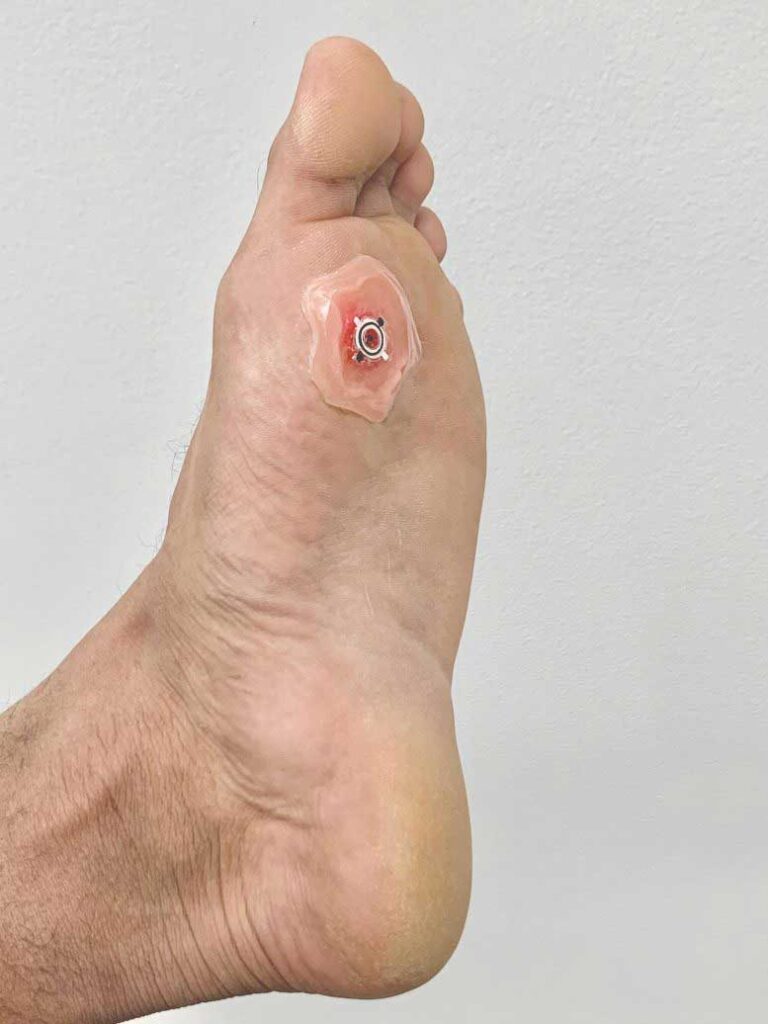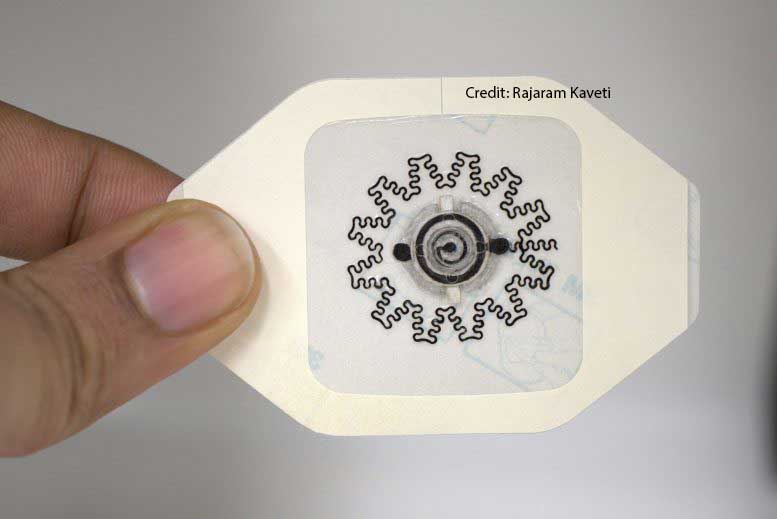Transforming Healing: Discover the Revolutionary Water-Activated Electric Bandages!
Revolutionary Water Activated Electric Bandages
Revolutionary Water-Activated Electric Bandages Speed Up Wound Healing
Newly developed water-activated electric bandages present an innovative and cost-effective approach to enhancing chronic wound healing within the comfort of one’s home.
Chronic wounds, which include persistent open sores often associated with diabetes, are notoriously slow to heal, if they heal at all.
These wounds pose a significant health risk, frequently recurring even after treatment and heightening the chances of amputation and mortality.
The challenge is compounded by the prohibitive costs of current treatment options.
In a groundbreaking development, researchers have engineered an affordable bandage that utilizes an electric field to expedite the healing process of chronic wounds.
Animal studies revealed that wounds treated with these electric bandages healed 30% faster compared to those treated with standard bandages.
“Our objective was to create a more accessible technology that accelerates healing in chronic wound patients,” explains Amay Bandodkar, co-corresponding author and assistant professor of electrical and computer engineering at North Carolina State University. “Additionally, we aimed to ensure the technology’s simplicity, making it suitable for home use rather than limited to clinical settings.”
Pioneering Water-Powered Dressings
“This effort is part of a broader DARPA initiative aimed at accelerating wound healing with personalized dressings,” shares Sam Sia, co-corresponding author and professor of biomedical engineering at Columbia University.
“The collaborative project demonstrates that these lightweight bandages, which generate electrical stimulation simply through water activation, promote faster healing at a rate comparable to more cumbersome and expensive treatments.”
The team developed water-powered, electronics-free dressings (WPEDs) – disposable wound coverings equipped with electrodes on one side and a small, biocompatible battery on the other.

When applied to the patient, the electrodes make contact with the wound, and a drop of water activates the battery. Once triggered, the bandage generates an electric field for several hours.
“The electric field is crucial, as it is well-documented that such fields expedite healing in chronic wounds,” notes Rajaram Kaveti, co-first author and postdoctoral researcher at NC State.
The electrodes are designed to flex with the bandage, allowing them to conform to the often deep and irregular contours of chronic wounds.
“This flexibility is vital because the electric field must be directed from the wound’s periphery toward its center,” Kaveti explains.
“To effectively focus the field, electrodes must contact both the wound’s edges and its center. Given the asymmetry and depth of these wounds, adaptable electrodes are essential.”
Revolutionary Water Activated Electric Bandages: Encouraging Results in Animal Studies
“We conducted tests on diabetic mice, a standard model for human wound healing,” says Maggie Jakus, co-first author and graduate student at Columbia.
“The device’s electrical stimulation accelerated wound closure, encouraged new blood vessel formation, and reduced inflammation – all indicators of improved healing.”
Specifically, the team observed that mice treated with WPEDs healed approximately 30% faster than those treated with conventional bandages.
Economic and Practical Advantages
“Equally significant is the low production cost of these bandages – we’re talking about a few dollars per dressing in overhead,” Bandodkar elaborates.
“Diabetic foot ulcers are a serious issue, often leading to lower extremity amputations,” says Aristidis Veves, co-author and professor of surgery at Beth Israel Deaconess Medical Center.
“There is a pressing need for new therapeutic strategies, as the last FDA-approved treatment emerged over 25 years ago. Our team is fortunate to be part of a project that explores groundbreaking techniques with the potential to transform the management of diabetic foot ulcers.”
Revolutionary Water Activated Electric Bandages: Future Implications and Directions
The WPEDs are not only affordable but also user-friendly. Once applied, patients can move freely, allowing them to continue with daily activities.
This convenience increases the likelihood of consistent treatment, as patients are less inclined to skip sessions or cut corners when they aren’t bound to a clinic or required to stay immobile for extended periods.
“Moving forward, our focus includes refining the technology to stabilize the electric field and prolong its duration.
We’re also advancing towards additional testing, which will bring us closer to clinical trials and, ultimately, to practical applications that can benefit patients,” Bandodkar concludes.
This study was recently published in Science Advances.
Reference
“Water-powered, electronics-free dressings that electrically stimulate wounds for rapid wound closure” by Rajaram Kaveti, Margaret A. Jakus, Henry Chen, Bhavya Jain, Darragh G. Kennedy, Elizabeth A. Caso, Navya Mishra, Nivesh Sharma, Baha Erim Uzunoğlu, Won Bae Han, Tae-Min Jang, Suk-Won Hwang, Georgios Theocharidis, Brandon J. Sumpio, Aristidis Veves, Samuel K. Sia, and Amay J. Bandodkar, 7 August 2024, Science Advances.
This research received funding from the Defense Advanced Research Projects Agency (DARPA) under grant D20AC00004 and from the Center for Advanced Self-Powered Systems of Integrated Sensors and Technologies at NC State, supported by National Science Foundation grant 1160483. Bandodkar and Kaveti are named inventors on a related patent application.







